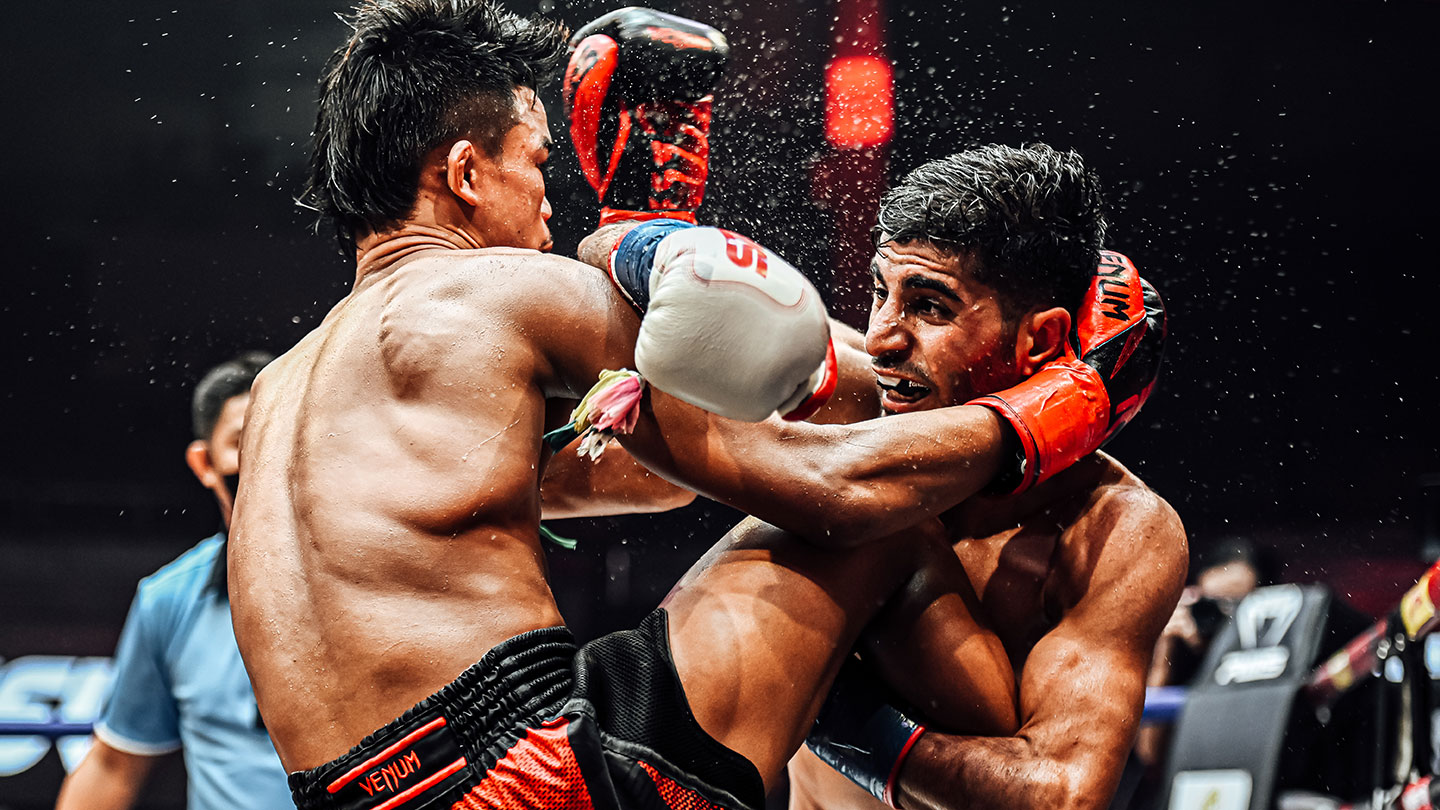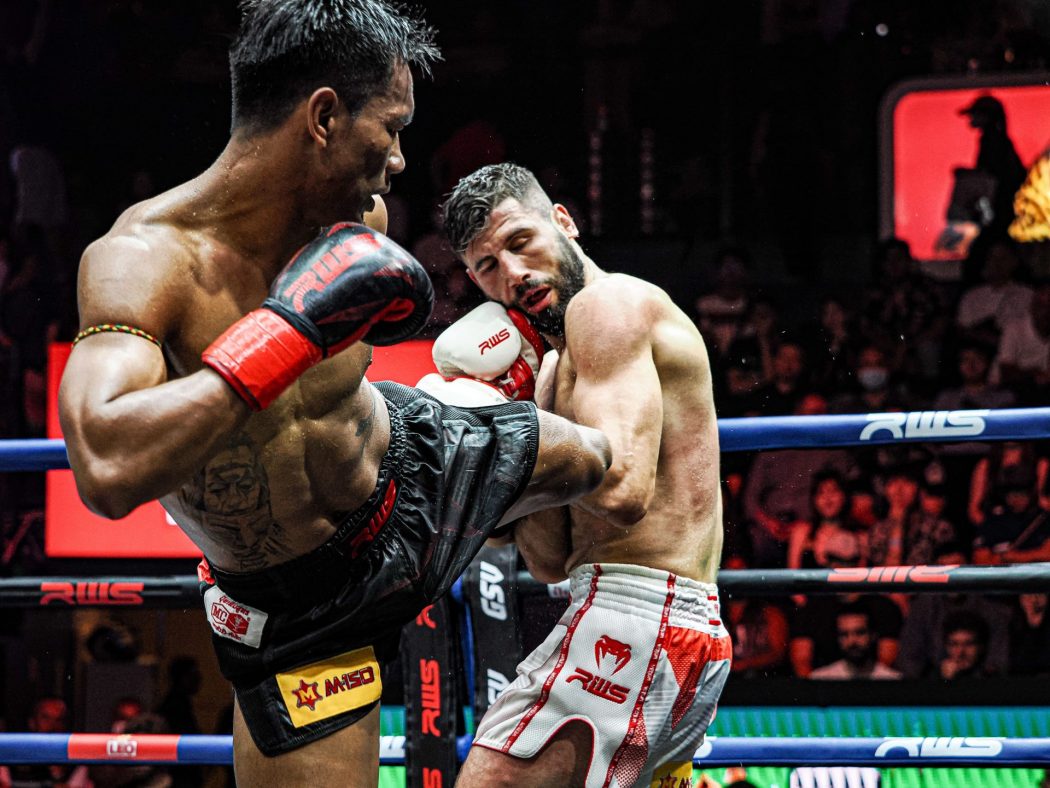Dive into the dance of Muay Thai footwork. Master techniques, drills, and experience live Muay Thai at Rajadamnern Stadium in Thailand.
Feb 13, 2024
Mastering Muay Thai Footwork: The Dance of Precision


In the dynamic world of Muay Thai, a martial art renowned for its powerful strikes, clinch work, and devastating kicks, the significance of footwork often takes center stage. Much like a well-choreographed dance, the fluidity and precision of one’s movements can be the deciding factor between victory and defeat in the ring. Whether you’re a seasoned practitioner or just stepping into the ring for the first time, understanding and mastering the fundamentals of Muay Thai footwork is not only essential but can elevate your overall performance to new heights. This guide to Muay Thai footwork for beginners and advanced will dive into the intricacies of Muay Thai footwork, including footwork drills in Muay Thai. Keep reading through the end for more exploration.
The Fundamentals of Muay Thai Footwork
Mastering the intricate dance of Muay Thai is an art that begins with a profound understanding of footwork, a facet as vital as the powerful strikes and clinches the discipline is known for. At the core of Thai boxing foot techniques are fundamental principles that set the stage for a Muay Thai fighter‘s success in the ring.
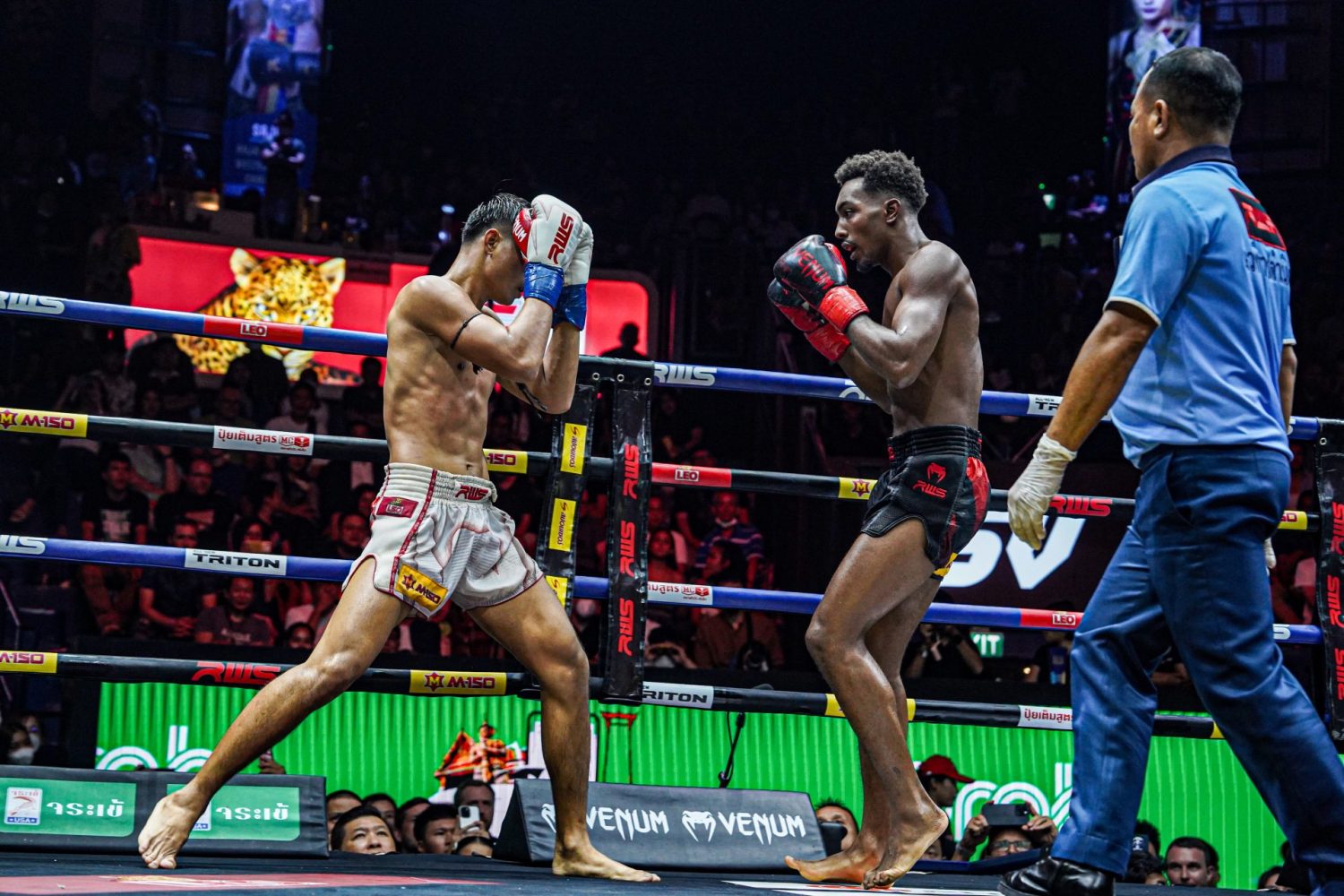
Stances: The Pillars of Balance
In Muay Thai, mastering the art of footwork commences with adopting the appropriate stances. The two primary stances are the “Orthodox” and “Southpaw.” In the Orthodox stance, the left foot is forward, while the right foot trails behind. Conversely, in the Southpaw stance, the right foot takes the lead, and the left foot follows. These stances form the foundation for a fighter’s balance, mobility, and strategic positioning during a match.
The Light Bounce: Evading with Grace
A distinctive feature of Muay Thai footwork is the subtle bounce that fighters employ. This rhythmic movement not only keeps them light on their feet but also serves as a means to gauge distance, evade attacks, and set up counter-strikes. The ability to seamlessly transition between a solid stance and a nimble bounce is integral to staying unpredictable in the ring.
Lateral Movement: The Sideways Shuffle
Muay Thai’s lateral movement involves a side-to-side shuffle that allows fighters to navigate the canvas with agility. This lateral shift is instrumental in avoiding oncoming strikes, creating angles in Muay Thai footwork for attacks, and maintaining a defensive posture. The sideways shuffle is a fundamental skill that both beginners and advanced practitioners continually hone to enhance their overall movement efficiency.
Pivot and Angle: Crafting Opportunities
An adept Muay Thai practitioner understands the significance of pivoting and angling to gain a strategic advantage. Pivoting involves a quick turn on the balls of the feet, enabling fighters to change directions swiftly. Angling complements pivoting by creating openings for attacks or evasions.
Retreats and Advances: Controlling the Distance
Control over the distance between opponents is a key aspect of Muay Thai footwork. Knowing when to retreat to create space or advance to close the gap is a skill that separates the novice from the seasoned fighter. Strategic footwork allows practitioners to dictate the engagement distance, setting the stage for powerful strikes or defensive maneuvers.
5 Footwork Drills for Skill Development
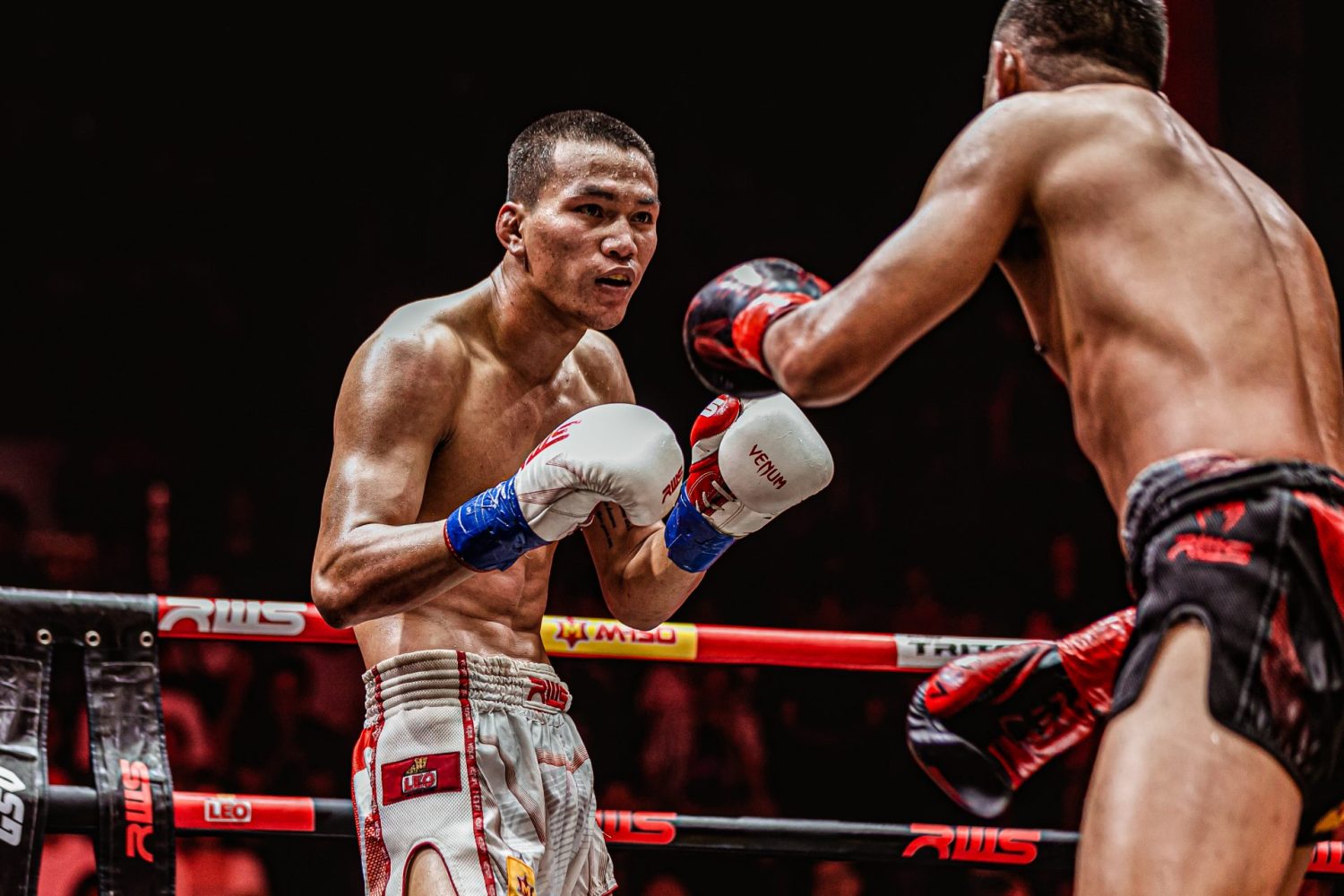
Embarking on the journey to mastery in Muay Thai involves not only understanding the foundational principles of footwork but also actively incorporating dynamic drills into your training routine. Here are the 5 footwork drills that will help improve your skills;
1. Shadow Boxing with Focus on Footwork:
Engage in shadow boxing sessions with a deliberate focus on footwork. Visualize an opponent and incorporate lateral movement, pivots, and stance transitions. This drill enhances agility, allowing you to seamlessly blend footwork with striking techniques. Challenge yourself by maintaining a consistent and controlled pace throughout the session.
2. Cone Ladder Drill:
Set up a ladder or use cones to create a grid on the floor. Practice precise footwork by moving through the grid with varied patterns, emphasizing lateral movements, quick pivots, and directional changes. This drill sharpens speed and precision, simulating the dynamic footwork required in the heat of a Muay Thai bout.
3. Agility Hurdles for Dynamic Evasion:
Arrange agility hurdles at varying heights and distances. Develop dynamic evasion skills by weaving through the hurdles using lateral movements, jumps, and quick directional changes. This drill not only enhances footwork speed but also improves overall agility, which is crucial for evading technique in Muay Thai and creating openings for counter-attacks.
4. Mirror Drill with a Partner:
Partner with a training companion for a mirror drill. Take turns leading and following, mimicking each other’s footwork. This exercise improves synchronization, awareness, and adaptability in response to an opponent’s movements. Incorporate defensive footwork in Muay Thai, lateral shifts, and controlled advances, fostering a deeper understanding of distance management.
5. Circle and Strike:
Designate a circular area on the training floor and pair up with a partner. One person takes the center while the other moves around the perimeter. The objective is for the person in the center to maintain proper footwork while evading strikes or countering. Switch roles periodically. This drill not only refines footwork but also hones defensive skills and strategic positioning.
Incorporate these footwork drills into your regular training routine to cultivate agility, speed, and precision. Consistent practice of these exercises will not only enhance your overall performance but also elevate your confidence in navigating the intricacies of Muay Thai footwork. Remember, mastery in Muay Thai is a continuous journey and dedicated focus on footwork is a fundamental step toward reaching your full potential in Muay Thai.

Key Techniques for Dynamic Muay Thai Footwork

The fusion of Muay Thai footwork techniques forms the cornerstone of a fighter’s ability to navigate the intricacies of the canvas with finesse. Each one serves a distinct purpose, from the foundational steadiness of stepping to the seamless transitions enabled by sliding and the tactical advantage gained through strategic pivoting.
As we delve into the key techniques for dynamic Muay Thai footwork, remember that these elements are not just individual movements but interconnected threads that weave a tapestry of skill and strategy.
Stepping
Mastering the art of stepping is fundamental to dynamic Muay Thai footwork. Ensure that each step is deliberate and purposeful, maintaining balance and readiness. Practice transitioning between Muay Thai stances and movement smoothly, whether moving forward, backward, or laterally.
Keep a slight bend in your knees to facilitate quick directional changes, and avoid telegraphing your movements to maintain an element of surprise in training and sparring.
Sliding
Incorporate sliding into your footwork arsenal for seamless transitions across the canvas. When sliding, maintain a low stance, allowing for quick changes in direction and improved stability.
Focus on keeping your movements fluid like Muay Thai step and slide plus controlled, minimizing unnecessary energy expenditure. During sparring, use sliding to gauge your opponent’s reactions and create openings for strikes or evasions.
Pivoting
Pivoting is a dynamic technique crucial for creating angles and gaining a strategic advantage. Practice pivoting on the balls of your feet, ensuring a swift and silent turn.
Incorporate pivots into your defensive maneuvers to evade attacks effectively, and use them offensively to position yourself for powerful counter-strikes. When sparring, surprise your opponent by combining pivots with strikes, keeping them guessing about your next move.
Tips for Implementation in Training and Sparring:
- Consistent Repetition: Devote focused training sessions to each footwork technique, repeating the movements until they become second nature. This repetition builds muscle memory, enhancing your ability to execute these techniques effortlessly during sparring.
- Shadow Boxing Integration: Integrate footwork techniques into your shadow boxing routine. Visualize different scenarios, adjusting your movements accordingly. This mental rehearsal reinforces the connection between footwork and overall fight strategy.
- Partner Drills: Engage in partner drills to simulate real-time reactions. Have a training partner mimic attacks, allowing you to practice defensive footwork and counters. Similarly, switch roles to work on evasive footwork when under pressure.
- Adaptability: Train in various scenarios to enhance adaptability. Change the pace, intensity, and direction of your footwork during drills to prepare for the unpredictable nature of sparring. Being adaptable in your footwork keeps opponents guessing and enhances your overall defensive capabilities.
- Feedback and Analysis: Seek feedback from coaches or training partners and analyze sparring sessions. Identify areas for improvement in your footwork and work on refining those aspects in subsequent training sessions.
By diligently incorporating these key footwork techniques and following practical training tips, you’ll not only enhance your overall movement capabilities but also gain a strategic edge in the dynamic world of Muay Thai. Remember, footwork is the silent architect of your performance in the ring, and its mastery is an ongoing journey of refinement and adaptation.
Witness the Dance in the Ring: Live at Rajadamnern

There’s a unique and electrifying spectacle awaiting those who step into the hallowed grounds of Rajadamnern, the world’s first Muay Thai stadium, where the heartbeat of Muay Thai echoes through every electrifying match. Here, the importance of footwork in Muay Thai transcends theory, revealing itself as the very heartbeat of the mesmerizing dance that unfolds within the ring. As you sit in the arena, the visual feast begins, with fighters showcasing the pinnacle of footwork excellence. Every step, slide, and pivot in Muay Thai is a testament to hours of dedicated training, precision, and strategic prowess.
If you’re passionate about the art of Muay Thai, seeking crazy things to do in Bangkok, or simply crave the thrill of a live sporting event, Rajadamnern Muay Thai Stadium is the place to be. Immerse yourself in the atmosphere, feel the adrenaline, and witness the dance in the ring. Don’t miss the chance to be part of this cultural phenomenon. Secure your ticket on our website now!

Related News
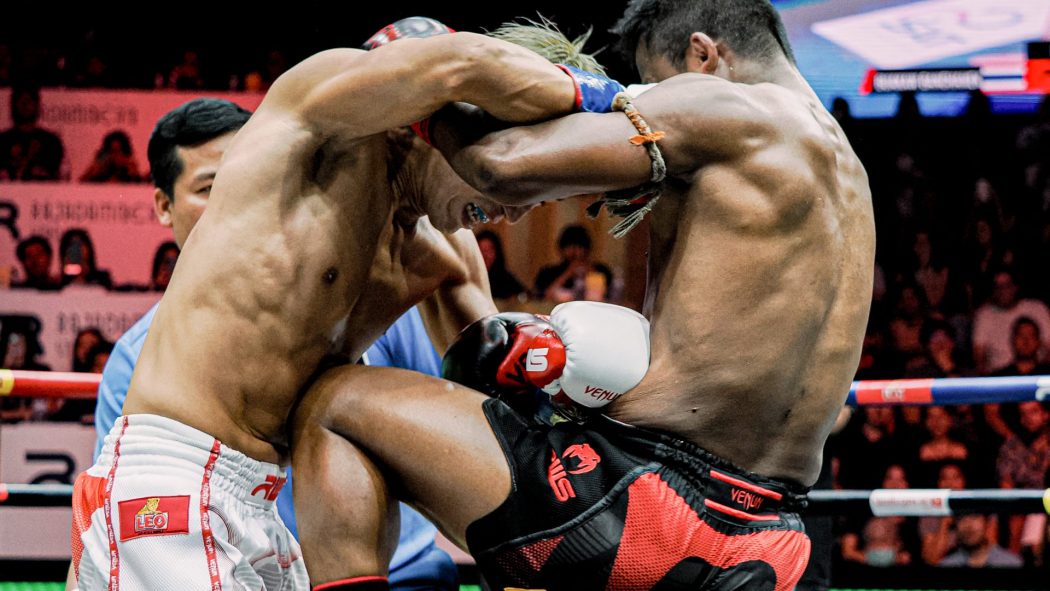
10 Muay Thai Blocks and Defensive Techniques for Beginners
Feb 13, 2024
Elevate your Muay Thai game with our guide to the 10 essential blocks every fighter needs to know. From high blocks to teep defense.




